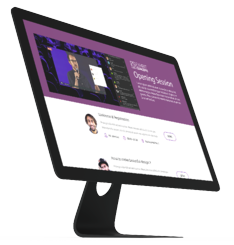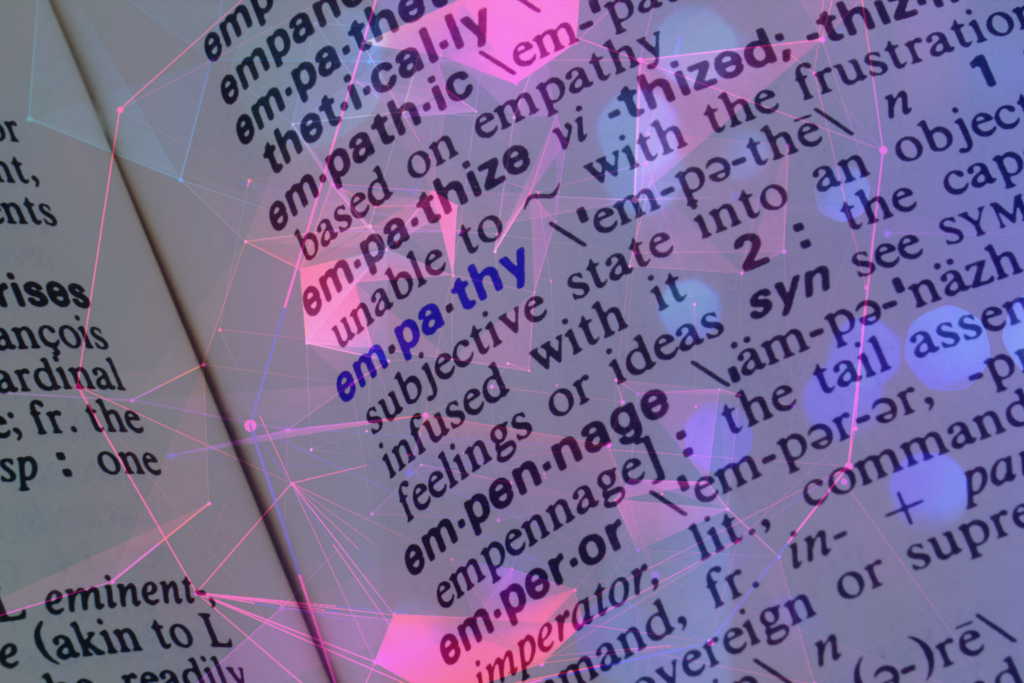empathy [em-puh-thee] noun:
(1) the psychological identification with or vicarious experiencing of the feelings, thoughts, or attitudes of another.
(2) the imaginative ascribing to an object, as a natural object or work of art, feelings or attitudes present in oneself:
When it comes to making a human connection, there is nothing more powerful than leading an interaction with empathy. Empathy is about experiencing someone else’s feelings and emotions, and, in that regard, it is more powerful and more authentic than sympathy. Sympathy is “I’m sorry for your loss.” Empathy is understanding what that loss feels like. Empathy starts with making eye contact, listening intently, and creating a lasting connection built on trust and understanding. It is the key to a meaningful relationship.

But what if you don’t have the benefit of a human connection? Is it possible to have empathy through the screen of a computer?
Enter digital empathy. And yes, it is possible to make those strong, human connections through the screen. But, you have to be strategic and proactive in your approach. With the rapid expansion of the use of digital communications in the 1990s to the point of being ubiquitous today, it’s never been more important to design technology and digital experiences with empathy to achieve that all important connection. Here’s how to bring this idea to life and make those connections with the people you want to reach in a meaningful way.
What is digital empathy?
We’re all familiar with empathy and how it works, but it is a bit different in the context of doing so digitally. Acting with empathy means having compassion, emotion, and cognition. The principle of digital empathy means applying these qualities into technology that is designed to enhance the user experience.

A key component of designing with empathy is thinking through the entire user experience, from start to finish. As you think through the customer experience, ask yourself questions like:
- Why are they here?
- What do they need?
- How can we fulfill that need for them?
- What’s the simplest way to explain how we can help?
- How can we be both fair and honest in communicating what we offer?
Before a design is even created, thinking about the user persona and asking those all-important questions will help you design the experience with empathy to ensure your customer has a positive experience with you. Walking a mile in their shoes is truly the key to success.
Extending the idea

While digital empathy technically applies to the development of applications and digital tools such as chatbots, the concept also applies to designing virtual experiences and our current state of screen-to-screen interactions. Bringing concern and genuine care for our audiences into the design process for a digital event, will help to make the event more relevant and relatable. Being cognizant of the importance of non-verbal cues to convey meaning and intent, will help to improve effectiveness of conference calls and email communication.
How does it work?
Creating a sense of loyalty with current and potential customers as well as friends and colleagues, begins with giving them a sense of control and trust. That means being honest online and clear in your communication, while also giving them the opportunity to educate themselves before making a purchasing decision.
Think about what you can offer them: educational resources are a great place to start. Consider a whitepaper or e-book on a topic that is relevant to them, blog posts that provide insights, or a digital trade show that seeks to educate and inform. These all build trust and ultimately lead to digital empathy.
How can it lead to meaningful connections?

At the end of the day, this is not just about making a sale–it is about making a connection. So, how do you do that? Designing a digital experience that “speaks” to your audience where they are – literally and emotionally – is the key. The internet is a crowded place, which means that standing out from the crowd with a strong strategy that offers empathy is a winning strategy.









